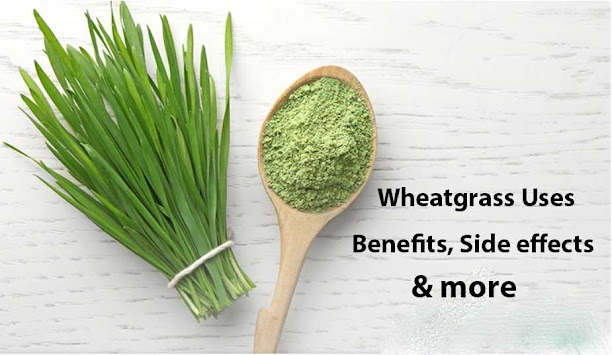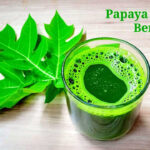What is wheatgrass
Wheatgrass is a type of grass that is commonly grown from wheat seeds and is used as a dietary supplement and natural remedy. It is often sold as a juice or powder and is believed to have several health benefits, including increased energy, improved digestion, and stronger immune system. Wheatgrass is also a source of vitamins, minerals, and antioxidants, making it a popular ingredient in many health and wellness products.
But say it can strengthen the immune system, detoxify the body and ward off illness. Folk medicine practitioners once used wheatgrass for everything from treating constipation to alleviating arthritis pain.
How to cure wheatgrass alleviating arthritis pain
Consuming wheatgrass juice: Wheatgrass is rich in anti-inflammatory and antioxidant properties which can help in reducing the pain caused by arthritis. Drinking wheatgrass juice daily can help in reducing the swelling and stiffness of joints.
Topical application of wheatgrass: Applying wheatgrass paste or oil on the affected area can provide relief from the pain. Wheatgrass has anti-inflammatory properties which can help in reducing the swelling and pain caused by arthritis.
Wheatgrass supplements: Taking wheatgrass supplements in the form of capsules or tablets can provide the body with the necessary nutrients to fight against arthritis pain.
A balanced diet: Eating a diet rich in anti-inflammatory foods such as turmeric, ginger, and omega-3 fatty acids can help in reducing the pain and inflammation caused by arthritis.
How is wheatgrass used?
Juice: Fresh wheatgrass juice is a popular way to consume it. It can be juiced at home or purchased at a juice bar.
Powder: Dried wheatgrass can be consumed in the form of a powder, which can be added to smoothies or juices.
Supplements: Wheatgrass supplements are also available in the form of pills or capsules.
Shots: Wheatgrass shots (1-2 ounces) are often consumed as a quick way to get a concentrated dose of the grass.
Topically: Wheatgrass can also be used topically on the skin to help with various skin conditions.
It’s important to note that while wheatgrass is considered safe, it’s best to consult a doctor before consuming it, especially if you have any health conditions or are taking any medications.
Can Wheatgrass Cure Your Illness?
Believers of wheatgrass use it to combat a number of everyday health conditions, including colds, coughs, fevers, digestive problems, and skin conditions. Wheatgrass has been used to potentially prevent and treat conditions ranging from cancer to serious conditions such as AIDS. Those who swear by it say the powerful ingredient in wheatgrass is chlorophyll, the pigment that gives plants their green color. They say that chlorophyll acts like hemoglobin (the protein in red blood cells that transports oxygen) and increases oxygen levels in the body. Any green plant food you’ve eaten over the years, such as spinach, parsley, arugula, is also contributing chlorophyll.
Read also :- Health Benefits of Papaya leaf juice
Wheatgrass always lives up to its claims
Despite all the health claims, there is little, if any, evidence that wheatgrass actually works to ward off or prevent or cure disease. Most of the small research has focused on the effects of wheatgrass on the digestive system. Here are some studies that have shown what wheatgrass can do:
Improving symptoms of ulcerative colitis. A 2002 study by researchers in Israel showed that treatment with wheatgrass juice reduced symptoms of ulcerative colitis — inflammation of the colon. More research needs to be done, but it points to potential benefits from wheatgrass.
Reduce the side effects of chemotherapy. Although there is no scientific evidence that wheatgrass can shrink tumors or increase survival in cancer patients, a preliminary study of 60 women with breast cancer found that wheatgrass helped reduce the risk of cancer without changing the effectiveness of treatment. Helped reduce the risk of cancer. Reduced some of the harmful effects of chemotherapy.
What are the dangers of wheatgrass?
here are some of the potential dangers of consuming wheatgrass:
Gluten Intolerance : Wheatgrass is derived from wheat, which contains gluten. For individuals with gluten intolerance, consuming wheatgrass can cause digestive issues such as bloating, abdominal pain, and diarrhea.
Allergic Reactions: Some people may be allergic to wheat or its by-products and consuming wheatgrass can result in an allergic reaction. Symptoms may include skin rash, hives, swelling, and difficulty breathing.
Interactions with Medications: Wheatgrass can interact with certain medications, such as blood-thinning drugs, antibiotics, and blood sugar-lowering drugs, causing adverse reactions or reducing the effectiveness of the medication.
Contamination: Wheatgrass can be contaminated with bacteria, fungus, heavy metals, or pesticides if not grown and processed properly.
Overconsumptions: Consuming large amounts of wheatgrass can cause digestive issues, including bloating, abdominal pain, and nausea.
It is important to speak to a healthcare professional before adding wheatgrass to your diet, especially if you have a medical condition or are taking any medications.


